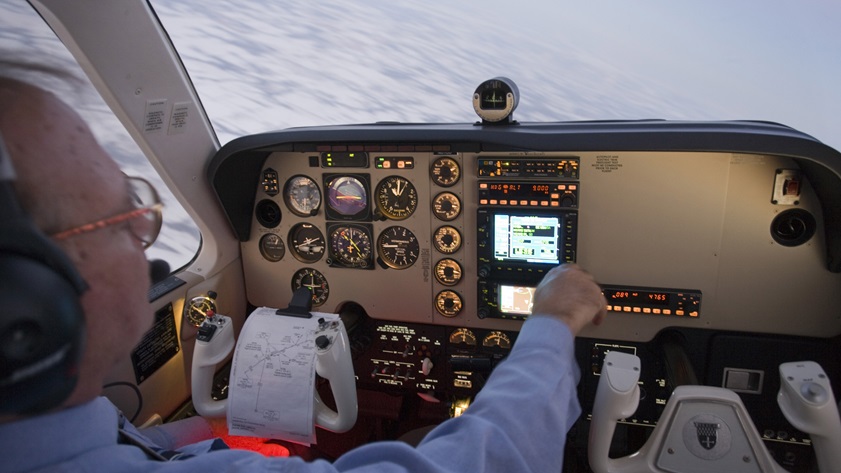Instrument Rating

A good question to ask yourself before you start instrument training is, why do you want this rating? The answers can usually be grouped into three areas. One common answer is that it's a good thing to have in your pocket just in case you need it. Next is that it's just another important step to a career in aviation. The third reason is that you want to increase the productivity of your personal or business flying.
There are different ways to obtain training for your instrument rating, and the reason you want the rating may have an effect on the training method that you choose. Should you enroll in a highly regimented FAR Part 141 school? Perhaps a full-time or part-time instructor at your local airport could do the job. Then, there are the accelerated courses. Some of these come to your location and provide intense training in your own airplane. Others require that you travel to their location. These accelerated courses usually have you finished up in 10 to 12 days. What's the best? That depends on you. The articles included below will provide information to help you decide.
The instrument rating requirements, as specified in 14 CFR 61.65, are summarized here:
A person who applies for an instrument rating must:
- Hold at least a current private pilot certificate or be concurrently applying for a private pilot certificate with an airplane, helicopter, or powered-lift rating appropriate to the instrument rating sought.
- Be able to read, speak, write, and understand the English language.
You must have logged the following:
- At least 50 hours of cross-country flight time as pilot in command. At least 10 of these hours must be in airplanes for an instrument-airplane rating.
- A total of 40 hours of actual or simulated instrument time on the areas of operation listed in 61.65(c).
- At least 15 hours of instrument flight training from an authorized instructor in the aircraft category for the instrument rating sought.
For instrument-airplane rating, instrument training on cross-country flight procedures that includes at least one cross-country flight in an airplane that is performed under instrument flight rules. This flight must consist of:
- A distance of at least 250 nm along airways or ATC-directed routing.
- An instrument approach at each airport.
- Three different kinds of approaches with the use of navigation systems (Example: ILS, VOR, GPS, etc).
- At least 3 hours of instrument training that is appropriate to the instrument rating sought from an authorized instructor in preparation for the checkride within two calendar months before the examination date.
Flight Training
Flight Training
- Receive and log flight training from an authorized instructor in an aircraft, flight simulator, or flight training device that represents the aircraft appropriate to the instrument rating sought on the areas of operation listed in 61.65(c).
- Receive a logbook or training record endorsement from an authorized instructor certifying that you are prepared to take the required practical test.
Ground Training
Ground training
- Receive and log ground training from an authorized instructor or complete a home-study course for the instrument rating sought. The aeronautical knowledge areas are listed in 61.65(b).
- Receive a logbook or training record endorsement from an authorized instructor certifying that you are prepared to take the knowledge test.
Simulators & Training Devices
Use of flight simulators or flight training devices
- A maximum of 30 hours may be performed in a flight simulator or flight training device if the training was accomplished in accordance with part 142, and a maximum of 20 hours if not accomplished in accordance with part 142. An aviation training device may also be used to log a maximum of 10 hours towards the rating.
IFR Fix
IFR Fix
Earning an instrument rating is guaranteed to be one of the most challenging, rewarding, and fun projects a pilot takes on during a lifetime in aviation. Each week, this series looks at the IFR experience from a new perspective, and poses a provocative piloting poll question on that subject to let you see what fellow instrument pilots—newly rated and IFR veterans alike—would do under similar circumstances. Whether the topic is a basic principle, or how to gain experience safely, or the “why” of an unusual approach or procedure, it’s all part of the conversation, as are reader suggestions for issues for us to examine.
Instrument Insights
Instrument Insights
This series of 12 articles from AOPA Pilot magazine addresses instrument flying issues and challenges.